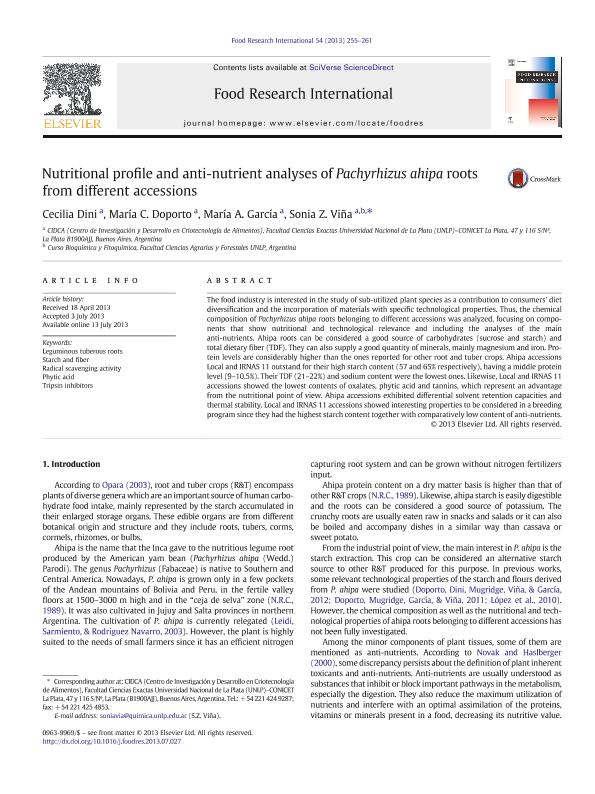Artículo
Nutritional profile and anti-nutrient analyses of Pachyrhizus ahipa roots from different accessions
Fecha de publicación:
11/2013
Editorial:
Elsevier Science
Revista:
Food Research International
ISSN:
0963-9969
Idioma:
Inglés
Tipo de recurso:
Artículo publicado
Clasificación temática:
Resumen
The food industry is interested in the study of sub-utilized plant species as a contribution to consumers' diet diversification and the incorporation of materials with specific technological properties. Thus, the chemical composition of Pachyrhizus ahipa roots belonging to different accessions was analyzed, focusing on components that show nutritional and technological relevance and including the analyses of the main anti-nutrients. Ahipa roots can be considered a good source of carbohydrates (sucrose and starch) and total dietary fiber (TDF). They can also supply a good quantity of minerals, mainly magnesium and iron. Protein levels are considerably higher than the ones reported for other root and tuber crops. Ahipa accessions Local and IRNAS 11 outstand for their high starch content (57 and 65% respectively), having a middle protein level (9-10.5%). Their TDF (21-22%) and sodium content were the lowest ones. Likewise, Local and IRNAS 11 accessions showed the lowest contents of oxalates, phytic acid and tannins, which represent an advantage from the nutritional point of view. Ahipa accessions exhibited differential solvent retention capacities and thermal stability. Local and IRNAS 11 accessions showed interesting properties to be considered in a breeding program since they had the highest starch content together with comparatively low content of anti-nutrients.
Archivos asociados
Licencia
Identificadores
Colecciones
Articulos(CIDCA)
Articulos de CENTRO DE INV EN CRIOTECNOLOGIA DE ALIMENTOS (I)
Articulos de CENTRO DE INV EN CRIOTECNOLOGIA DE ALIMENTOS (I)
Citación
Dini, Cecilia; Doporto, María Cecilia; Garcia, Maria Alejandra; Viña, Sonia Zulma; Nutritional profile and anti-nutrient analyses of Pachyrhizus ahipa roots from different accessions; Elsevier Science; Food Research International; 54; 1; 11-2013; 255-261
Compartir
Altmétricas




